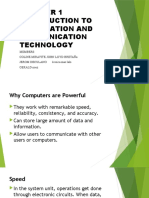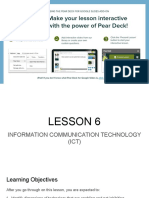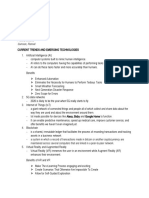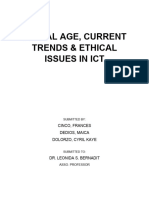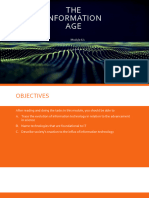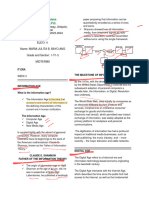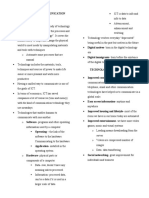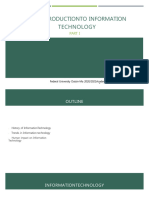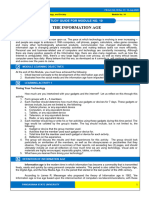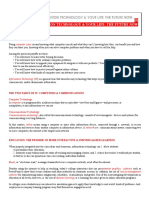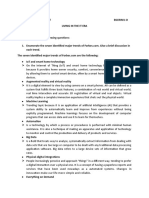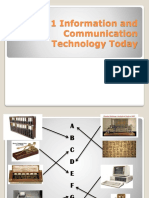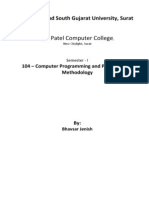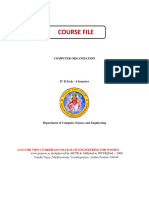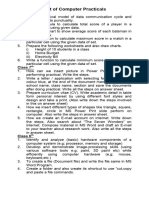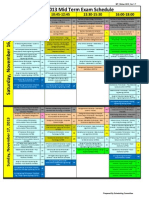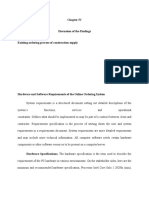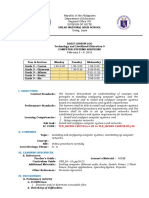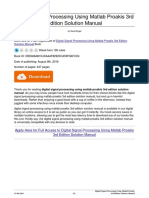Module 6: INFORMATION AND COMMUNICATIONS TECHNOLOGY: An Overview
a. evolution of technology
b. digital age, information age, and computer age
c. media in the digital age
d. overview of current trends
WEEK Number: 7
TIME ALLOTMENT: 1hour
OBJECTIVES:
• At end of the module, the students should be able to:
• Trace the evolution of technology, particularly computers
• Explain the role of technology in media and how it affects communication; and
• Recognize the current trends in information technology
LEARNING CONTENT:
INFORMATION AND COMMUNICATIONS TECHNOLOGY: An Overview
INTRODUCTION:
The concept of technology has evolved throughout the years. As the rate of human progress
continues to Increase, society has adapted in such way that technology no longer appeals to mechanical
or electrical systems alone. The term technology presently includes advancements in communication and
how information is handled, thus enabling government, organizations, industries, and ordinary individuals
to improve on their decision-making, business processes, and everyday living.
DISCUSSION:
A. Evolution of technology
The evolution of technology has always depended on one thing: the human rationale. Humans tend
to think of ways on how to discharge tasks or workload, or do daily activities easily. The concept of
technology always starts with the basic tool.
By combining a set of tools, people have come up with machines that can do the tasks faster and
more efficiently.
Another type of machine that is considered a necessity is the computer. A computer is an
electronic device, operating under the control of instruction stored in its own memory, that can accept
data, manipulate the data according to specified rules, produce results, and store the results for future
use.
However as technology evolves, so do machines. Computers today are no longer the same
computers your parents must have first used. Most machines, including computers, have evolved through
the process of automation. Automation is defined as “the techniques of making an apparatus, a process
or a system operate automatically”
However, an automated system is not the same as an intelligent system. Intelligent systems are
far more complex and are capable of learning. This is where the concept of artificial intelligence comes in.
� B. Digital Age, Information Age, and Computer Age
It is a period in human history characterized by the shift from traditional industry to information
technology-based economy brought by industrialization during the industrial revolution. The definition of
what digital means continues to change over time as new technology, user devices, and methods of
interaction with other people and devices enter the domain of research, development, and market launch.
This period is also characterized by the digital industry creating a knowledge-based society
surrounded by a high-tech global economy that exerts its influence on how the manufacturing process and
the service section work in an efficient and convenient way
C. Media in the digital age
Media normally refers to the means of communication that uses unique tools to interconnect
among people. The forms of media include televisions, radio, cellular phones, and internet. In the digital
age, however, media can be considered as the message, the medium, and the messenger.
• The message
Media is considered to be the message itself for those who create and own the rights of content.
The forms of content can beuser-generated or professionally-produced. User-generated content is a form
of content created and owned by the users of a system.
• The medium
The medium used refers to the tool/s used in sending a message from the source to the destination.
Traditionally, for example, professionals send messages to the audience, such as a news anchor, delivering
the news on tv or radio. However with the latest technology, the so called social media has become an
avenue for information dissemination even taking over news sites in bringing the latest or up-to-date
content.
• The messenger
The messenger is the one who delivers the message. This is why broadcasters for example, being
the messenger of news are called media. In the digital space, however, does the media also refer to social
network users who create content themselves but are not professional journalists. Hence, although the
media can be the message, the medium, and the messenger, In the, digital age, the demarcation lines
between them are somewhat blurry.
D. Overview of current trends
A trend refers to something hip or popular at a certain point in time. It can a particular style in
fashion, devices, or entertainment. A new trend may always come along to replace the old one.
Technology trends tend to change as time goes by. Following Moore’s law, technology is bound to
upgrade itself every two years. In 1965, Gordon Moore predicted that the computing power would
dramatically increase over time. But as it increases, cost is expected to proportionally go down. Nowadays,
the two year production has even decreased with release happening less than two years, if not, yearly.
Aside from cost, sizes of hardware have also
Decreased in making devices, such as smartphones, more useful and dependable.. In an article
from forbes.com, demers (2-16) identified seven major trends in 2017.
� 1. IoT and smart home technology
The so-called internet of things (iot) has been trending since 2016. The vision of iot has evolved due
to the convergence of multiple technologies, including pervasive wireless communication, data analytics,
machine learning, and use of hardware technology such as sensors, microprocessors, and
microcontrollers. Controlling home appliances through mobile phone-such as switching the lights on and
off, setting the timer for the washing machine, and controlling the television to record shows that might be
missed due to traffic-is now possible
2. Augmented reality and virtual reality
In 2016, the release of games such as Pokémon go, and the anticipated VR headset, oculus rift
served as a turning point for AR and VR technology
3. Machine learning
Also called artificial Intelligence, having machines decide for you seems to be a daunting task and
would probably make you think of robots and talking computers.
Its latest features include the following:
- face ID
- All bionic
- wireless charging
- IOS 11
- augmented reality
4. Automation
Through advanced technology, it is now possible to automate previously human-exclusive tasks.
This is very much evident through wearable devices such as step counters and heart rate monitors used by
health-conscious individuals. Information collected is automatically saved and stored in mobile devices
for analysis later on.
5. Big Data
Big data is a term that describes large and complex volumes of data. But it is not how much data an
organization has it is what they do with it that matters. Big data can be analyzed for insights which can help
management make better decisions and come up with more effective strategic plans. Waze is an example
of an app management make better decisions and come up with more effective strategic plans. Waze is an
example of an app which uses big data. The app helps users determine traffic, direction and route
estimations, and notifies users with accident alerts and roads hazards, among others.
6. Physical-digital integration
Majority of organizations nowadays are moving towards system automation. As such, they identify
their physical elements and create digital data for more efficient operation back up. The concept of having
a paperless company in which transactions, reports and services are done using automated system is one
such example.
7. Everything On Demand
Due to the prevalence of network connectivity, it is possible to have information on demand. Music,
movies, and even drivers are made available through the apps in a smartphone.



